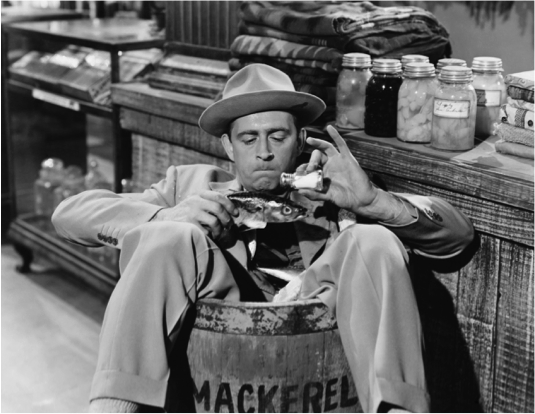By Ben Newton, Principal Product Manager, Sumo Logic
"Whoever said money can't buy happiness simply didn't know where to go shopping."
Bo Derek
The U.S. has many rituals that define the progress of the year, some quite traditional like Christmas and Thanksgiving, and some with an air of shared ridiculousness like Black Friday. It is now a deep-seated American tradition to revel in the shared gluttony and community of Thanksgiving and then exercise those calories off the next day in the way we Americans know best - shopping! It wasn't always that way.
The term Black Friday comes from 1950's Philadelphia to describe the barely controlled chaos of thousands who poured into the city for the Army-Navy game the Saturday after Thanksgiving. In the 1980's, retailers successfully rebranded that rather unflattering name into a cultural phenomenon. Since the 80's, the world has changed, particularly in the world of retail, in which the shopper has changed as much as the shopping center, with technology playing a massive role in those changes. For example, in I the past couple of years, Big Data and Machine Learning have gone from being fringe technologies to must-haves.
According to research by Accenture Analytics, two-thirds of retailers consider Big Data "extremely important" to their retail operations and more than three-quarters believe Big Data is changing the way they do business. So, what are the areas where we are seeing those technologies applied?
Shoppers want personalized experiences
Two interrelated, long standing trends in retail are increased connection of shoppers with their favorite brands and their expectation of interacting with those retailers on their own terms. Despite the increased dominance of internet-based shopping, more than 85% of customers still want to interact with brands in person. Since no one leaves home without their phone, the phone becomes an extension of the brand experience in the store. With the cutting edge brands (Apple, Starbucks, Target, etc.) the line between the online and "offline" brand experience is fading . This is only possible because of the piles of data that all of us as consumers produce. For example, in my own personal experience, I never buy anything without researching it online first - very often in the store itself. I even found myself researching a second-hand guitar amplifier in a pawn shop before buying it. Picking up your phone to research purchases is just muscle memory for most people now.
Black Friday is but one day of many
As every retailer knows, a brand experience is built up over many interactions with a customer. While we might have uncovered Black Friday deals in the newspaper 20 years ago, few customers are interacting with a product or brand for the first time in the store on Black Friday. They might have lurked in the online store beforehand, added a product to their wish list, read reviews, etc. Leading retailers will use that information to enhance the Black Friday experience.
Black Friday has also long been giving ground to "Cyber Monday" as more customers shop online. We may have even reached a real tipping point in the online vs. in-person experience, since more customers are planning to shop online over the Black Friday weekend than go in-person this year.
In response to these trends, some retailers have decided that Black Friday is outdated. On one end of the spectrum , Amazon.com, as the quintessential online retailer, has turned Black Friday into a multi-week experience, while at the other end of the spectrum has REI taking a firm stand to close on Black Friday to encourage people to spend time together. In both cases, these retailers understand their core customers and are adjusting the retail experience to best meet their customers where they are. For better or worse, the combination of the power of the Internet and the deeper insights of Big Data are making retail less of one dominated by a few big shopping days, to more of a continuous immersion into your personal consumer experience.
Predicting Demand
One of the biggest challenges, and perhaps least "sexy"problems of retail is managing inventory. Traditionally the retail "sale" was a way to manage over-stock of inventory while clearing the sales floor for the next season - making way for winter from fall, spring from winter, etc. It was definitely conventional wisdom when I was growing up to wait for the end of season to get the best deals, which, of course, meant that by the time winter rolled around again, I had forgotten about the cool sweater I purchased the year before. With today's finicky customer and even tighter margins, retailers can't afford to blithely follow these long-seated expectations. Today's brand has to practically engage in some sort of pseudo-fortune telling to predict what moderately affluent, 16 year-old girls living in suburban Atlanta will want to wear come November if it is raining more than usual. Consumers barely understand themselves - so how can a retailer? Ding, Ding - Big Data is the right answer. Using powerful machine learning software, retailers can divide their core customers into neat little segments and do a pretty good job of predicting demand. These new algorithms can take a whole range of inputs from weather to supplier stock. At the end of the day, the possibilities for using machine learning to get more efficiency out of the supply chains and deliver more value to customers is almost endless.
Like most areas of our life touched by technology (are there any that aren't - none come to mind ), the core human desires for happiness, love, and fulfillment are matched with the raw power of the algorithm chewing on mountains of data to reduce those desires to simple recommendations. Amazon.com constantly keeps me updated on my wishlist, both expressed and unexpressed, with the determination of a stock tracker, while Apple whispers in my ear about the latest tech gadget I absoutely need. Oh - gotta go. My Apple Watch just dinged with an important reminder about something I forgot to buy...



